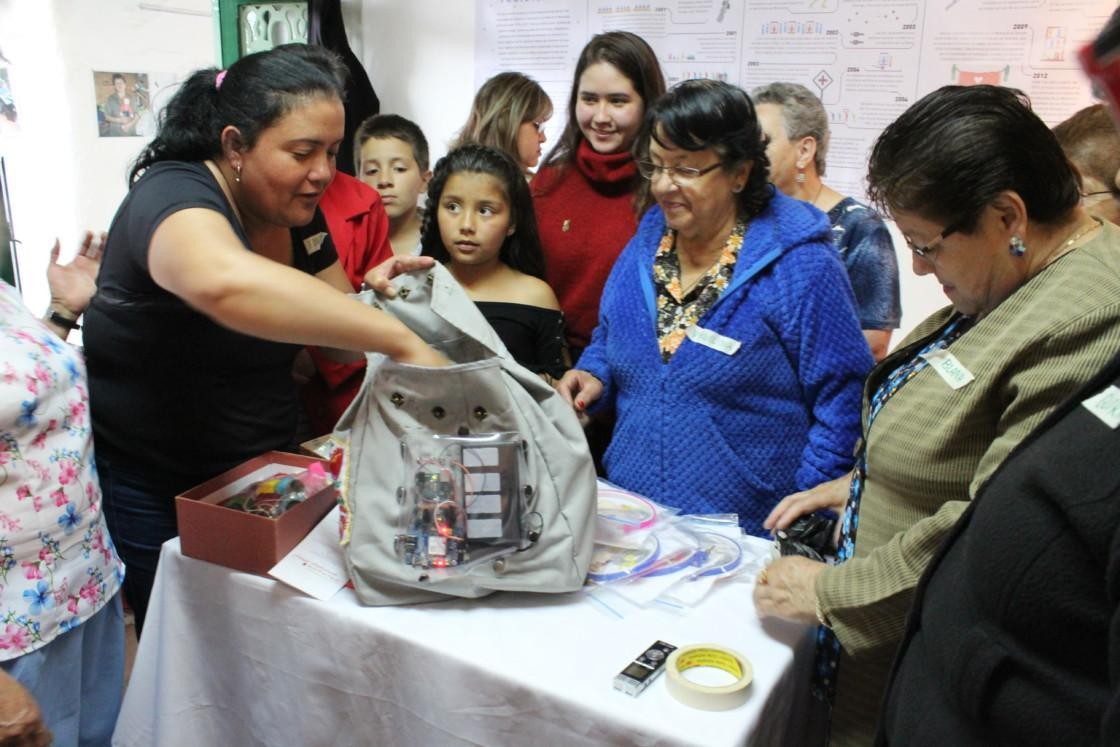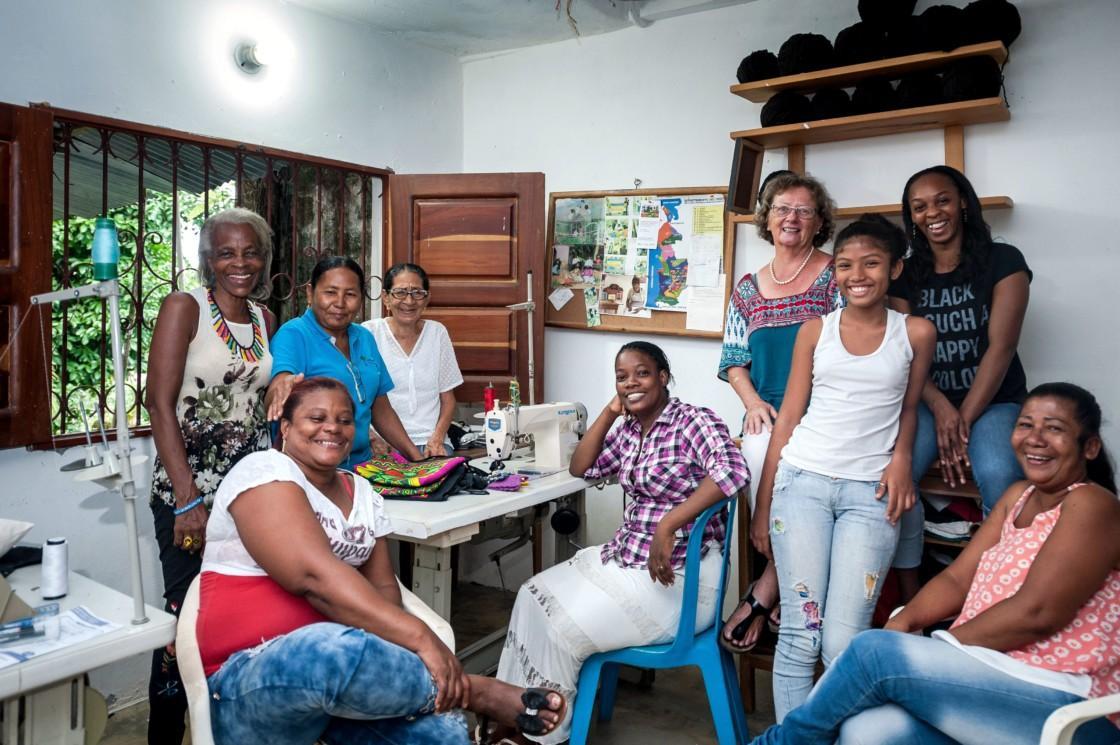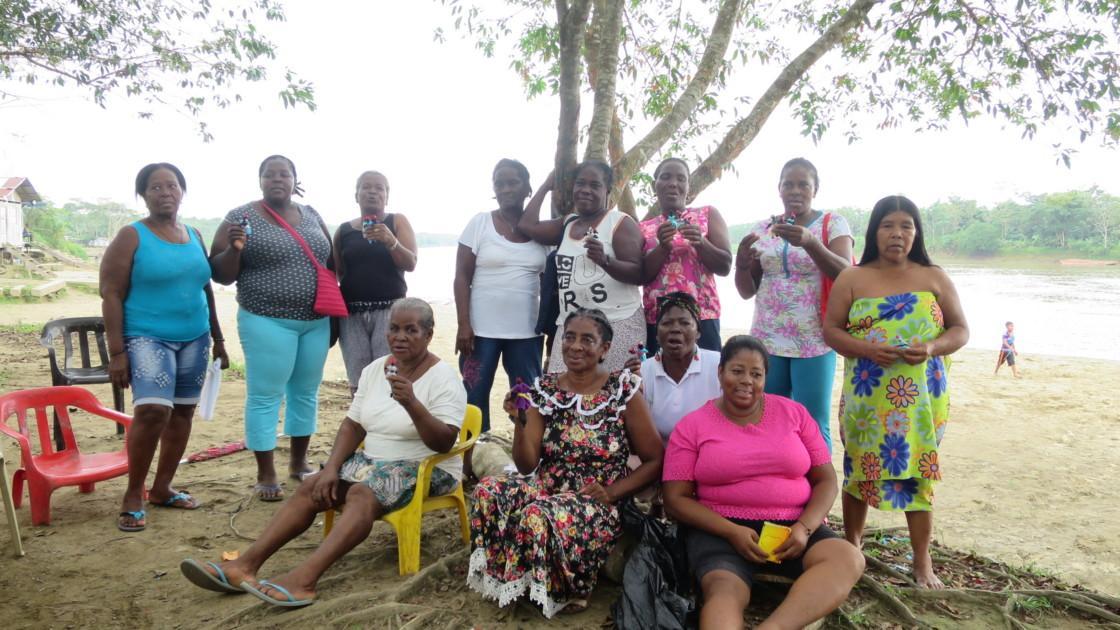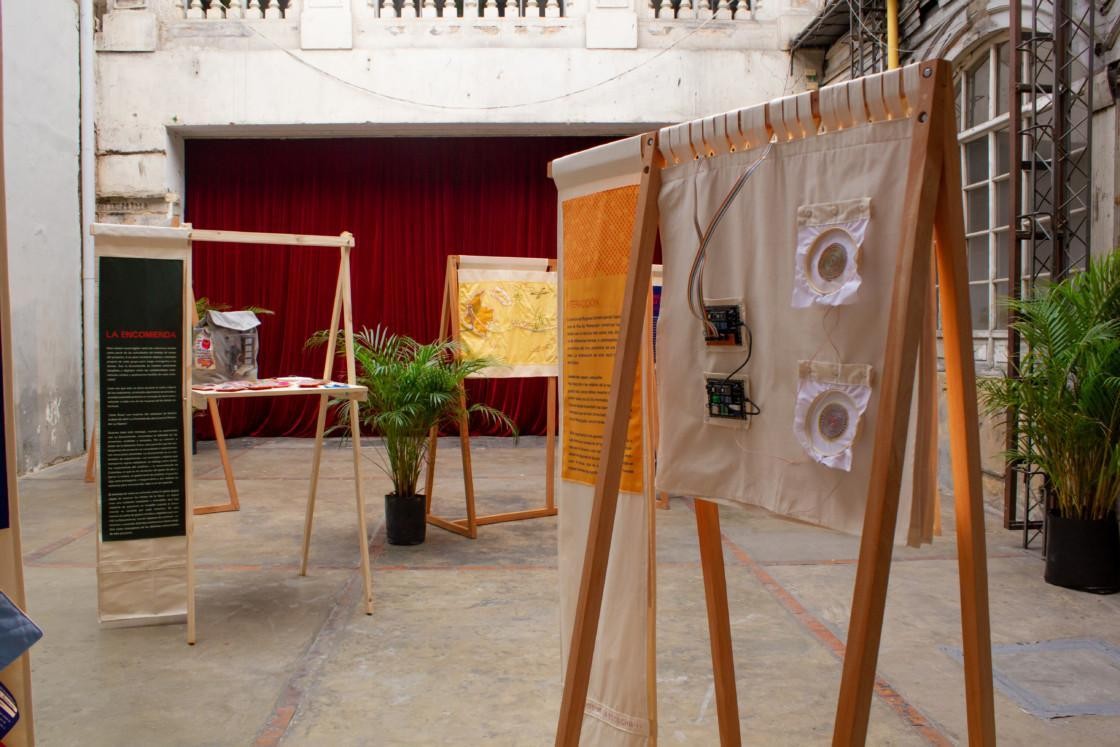Context:
In Colombia, textile making has emerged as an important way for collectives of women to process the grief and trauma that they have suffered through many years of conflict. Since the 2016 peace agreement, the country has turned towards processes of reconciliation. The project Remendar lo Nuevo (Mending The New), brings together researchers from the Universidad Nacional de Colombia, Universidad de Antioquia and Universidad de Los Andes with several women’s textile collectives to explore how physical and digital artefacts can be combined to create an archive of textile testimonials. The project is called Remendar lo Nuevo (Mending The New), because communities are being asked to explore what reconciliation means for them, and in many cases they are still figuring out how (and with whom) to mend relationships in an unstable situation where violence still regularly emerges.
“It’s often assumed that peace means leaving something behind, but in Colombia (and many other societies) it doesn’t work like that because conflict is an ongoing situation. When you’re asked to reconciliate – a discourse that is new – but there are still things happening in terms of conflict, how can you reconciliate and with whom? Why do I have to? The idea of something new that has to be mended came about because people haven’t considered the meanings that are attributed to this mandate.” – Tania Pérez-Bustos
Transformative creative practices:
During the two-year project, researchers organised a series of ‘workshops with communities inviting them to think through their textile making about reconciliation, they also organised a couple of mingas (spaces for collaboration and thinking/making together) where researchers, artists, designers and technologists worked with women’s stories and pieces to add digital artefacts into their processes of memorial-making. In these spaces they experiment with textile and digital artefacts – often augmenting textile pieces with the capacity to send SMS messages, or store digitally-recorded oral histories. The physical and sensory qualities of textile work create what project leader Tania Perez-Bustos calls ‘textile atmospheres’ – that allow people to listen differently.
“If you have a threaded needle and a round tambour with some fabric in it, you are holding it close to you… the needle goes into the fabric and goes out. The movements are reflexive and that creates some inner reflection… and when you do that with others it creates a textile atmosphere in which you are listening with the bodies of the others that are also making. There’s a togetherness that is created in this process.” –Tania Pérez-Bustos
Doing textile work together opens up a space of reflection and offers a way for the women to re-narrate traumas stitch by stitch amongst a supportive group. In addition to making the textiles, they are also re-making themselves through a process of deep reflection. Pérez-Bustos calls these practices and spaces “improvisational technologies of healing”.
“When you take the time to stitch in a beautiful typography the name of someone who was killed, then you stay with that name for five hours in that silence it is very powerful…you’re creating memory, you’re creating a document that you have made.”








Connections to eco-social sustainability:
Past conflicts in Colombia have been deeply entwined with control over land use, in what Pérez-Bustos calls an “an ecological war”. Women displaced from their own smallholdings and into cities also grieve the loss of this connection to the land through textile making. Flora and fauna are often included in textile pieces remembering lost practices: of growing, of cooking and of healing using medicinal plants. Sustainable land stewardship relies on stable communities, and in Colombia, rebuilding one lays the foundations for rebuilding the other.
“The losses of war are not only human lives, but also territories in danger… the women are creating memories of those more-than-human losses to an ecological war”.
Learn more:
Researchers worked with textile collectives in Chocó, Bolivar and Antioquia to carefully document new and existing textile works in collaboration with the women. Together the project participants produce an online exhibition, an e-book and an online web archive that seek to capture the spirit of collectivity engendered at the research, and to invite people from outside to connect with the stories that are being told by the women through their embroidery.
The online exhibition Los Tiempos De La Escucha (Time to Listen) is a curated exhibition of the works created by the women working in common exploration with artists, designers and makers in spaces of shared reflection. It includes images of the work and oral testimonies of the women. It reveals some of the metaphors that the communities use to characterise reconciliation: seeing echoes in certain cooking practices, in medicinal plants, or in the movement of animals. The e-book Remendar lo nuevo: Compartiendo Aprendizajes (Mending the New: Sharing Learnings) was composed by the communities, and includes pieces of oral storytelling, photographs and texts. Finally, the Archivo Digital De Textiles Testimonials (Digital Archive of Textile Testimonies) is a wider digital archive that links together the work of 10 different initiatives of sewing for memory in Colombia. The Archive was also co-designed with the women and provides detailed information about each piece, including recordings of how it was made, and an object biography.
These web resources amplify the women’s own documentation practices, helping them to reach new publics as part of a responsive and open research practice. They ask visitors to step into communities of displaced people, as Pérez-Bustos says “to make the trouble of these communities our own, to understand that we are in here together”.
Project credits:
The project was funded by the Ministry of Science and Technology in Colombia. It was let by Universidad Nacional de Colombia. Principal Investigator: Dr. Tania Perez-Bustos, Universidad Nacional de Colombia, Co-investigators: Natalia Quiceno Toro, Olga Jaramillo González and Isabel Gonzáles, Universidad de Antioquia, Jaime Patarroyo and Eliana Sánchez Aldana, Universidad de Los Andes.
The Project received collaboration of the Newton Fund. Prof. Dimitris Papadopoulos, The University of Nottingham, Prof. Lucy Suchman, Lancaster University, Dr. Maria Puig de la Bellacasa, Warwick University.